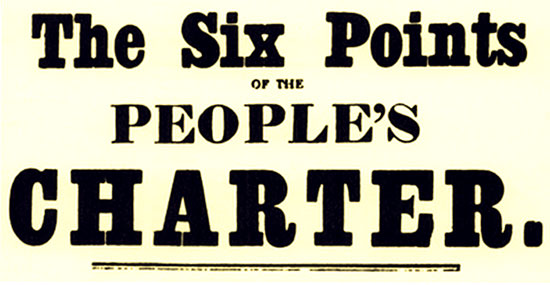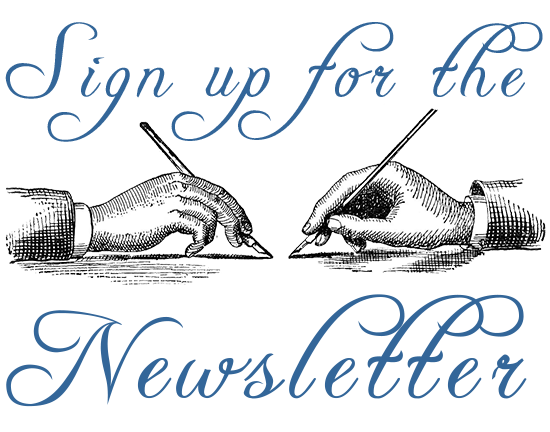Last Updated on June 7, 2023
When Season 3 of “Victoria” begins, the year is 1848, and Europe is in crisis. The agitations of the downtrodden and discontent create a wave of revolutions to overthrow aristocratic rule.
At this time in England, land-owning and middle class men had secured the right to vote, but not working men. This led to Chartism, a set of demands for universal male suffrage, the secret ballot, equal representation for voters and other reforms that were considered radical by leading political figures during Victoria’s reign.
In the first episode of the new season of “Victoria,” we see the ‘Six Points Charter’ circulating among the working people. Prince Albert experiences the living conditions of the poor firsthand. Queen Victoria is about to give birth to her sixth child, Princess Louise, and is trying to understand who the Chartists are: do they love her, or wish to see her dead?

To help keep this site running: Willow and Thatch may receive a commission when you click on any of the links on our site and make a purchase after doing so.
This isn’t the first time the Chartists have played a part in “Victoria.” In the first season of the period drama, in the episode ‘Brocket Hall,’ their protests lead to the 1839 Newport Rising. Those caught (including the nephew of Mrs. Jenkins, the senior dresser to the queen) are sentenced to a traitor’s death. Victoria sees Jenkins’ pain, and commutes the prisoners’ sentences, sending them off to Australia instead.
Series writer Daisy Goodwin said if “Victoria” encourages viewers “to look a little more closely into their history and realise that people lived, loved and struggled then just as we do today, then I’ll feel that my work has been done.”
So who were the real Chartists? And was the real Queen Victoria really so sympathetic to them? To find out more about the political movement that takes front seat in Season 3 of the historical drama, we turned to Stephen Roberts, a scholar who has been writing about the Chartists for almost forty years. Here’s what you’ll want to know so you get the most out of the new season.
![]()
Who Were the Chartists?
Chartism was a protest movement organised around a demand for a say in law-making for all men which conscripted the support of huge numbers of working people in Britain from the late 1830s until the late 1840s. Up to that point men had been enfranchised on the basis of the ownership of property, but the Chartists believed that democratic participation in the governance of the country was a fundamental right.
Chartism was a constitutional movement; it should not be defined by a small number of outbreaks of violence. The Chartist leadership sought to secure manhood suffrage supported by secret voting and the payment of MPs by displays of the considerable numbers who had rallied around the campaign. Three petitions, signed by millions of people, were presented to Parliament in 1839, 1842 and 1848. Across the country meetings – the largest often held on moors and attended by hundreds of thousands – were organised to put pressure on the authorities. The strategy of displaying the scale of support had appeared to work when middle class campaigners had secured the vote for themselves under the Reform Act of 1832 and the Chartists saw no reason why it would not work again.
This time the ruling elite saw no need to make concessions.The three petitions were in turn rejected.Many hundreds of Chartists, including the national leaders, were imprisoned. Over a hundred caught up in the outbreaks of violence were transported to Australia, though no Chartist was ever executed.
The great champion of the Chartist cause was Feargus O’Connor. An Irishman, Feargus was physically imposing, defiant, optimistic and possessed a good line in jokes. Feargus undertook speaking tours throughout the country and was mobbed in scenes of great excitement when he arrived in towns to address meetings. He was the subject of the most popular Chartist song ‘The Lion of Freedom’ and many hundreds of children were named after him. Feargus was also the proprietor of the Northern Star newspaper, which, with its reports from Chartist localities across the country, did much to create a national movement.
There other notable national leaders, amongst them William Lovett, who drew up the famous People’s Charter, Bronterre O’Brien, a socialist theorist, Julian Harney, the editor of the Star and the poet Ernest Jones. The local leaders in Chartist centres – men like Thomas Cooper in Leicester and George White in Bradford – played a vital role in sustaining the Chartist challenge. These men were not failures or drop-outs; they had often sacrificed better prospects to become part of the movement.
The two most famous events associated with the Chartist challenge are the Newport Rising of 1839 and the Kennington Common demonstration and great petition of 1848. In South Wales, on the night of 3-4 November 1839, a march into Newport resulted in over twenty Chartists being shot dead by soldiers. Following the rejection of the first petition by the House of Commons in July 1839, underground plans for a rising in the north and South Wales appear to have been formulated. Though these plans were not fully developed or well co-ordinated, this was the only time that Chartism represented a truly insurrectionary threat. The leaders of the Newport Rising John Frost, William Jones and Zephaniah Williams were all transported.
Inspired by Feargus’ return to the House of Commons – the only Chartist ever to be elected an MP – in July 1847 and the overthrow of the monarchy in France in February 1848, the Chartists presented a third petition on 10 April 1848. The day began with a huge meeting on Kennington Common. The claim was that the great petition had been signed by six million people. House of Commons clerks, however, reported that there were many forgeries and that figure was in fact 1.9 million – though the speed with which they counted the signatures was truly remarkable. The newspapers now mocked the great Chartist petition, but many Chartists looked back with pride on what they had achieved in 1848. It should be remembered that two million signatures testified to an enormous level of support for the Chartist cause.
The ruling elite had no intention of giving in to the demands of the Chartists; for them working people were uneducated, drunken and violent. The views of Queen Victoria were summed up in her remark about the Chartist speaker Thomas Cooper after the strikes in the Potteries in August 1842: ‘The Queen thinks everything shd. be done to apprehend this Cooper….’ In Season 1 of the television series ‘Victoria’, the Queen is portrayed as intervening to spare the leaders of the Newport Rising from execution. This is simply did not happen. At the time of the Kennington Common demonstration in 1848, the Queen left London for the Isle of Wight.
In local communities Chartism left a potent legacy. Years later stories of the great Chartist campaign would be told to family members and friends; autobiographies would be written; and Chartist banners would be retrieved and used at reform demonstrations. And what of the young men who became Chartist leaders in their communities? Many later became councillors and journalists. Involvement in the Chartist campaign had clearly given them great self-confidence and a desire to continue to speak up for working people.
Stephen Roberts has been writing about the Chartists for almost forty years. His most recent publication is James Whateley and the Survival of Chartism. He is also the editor of Annotated Bibliography of Chartism 1995-2018. Stephen is an Honorary Associate Professor of the Australian National University.
If you want to know more about the Chartists, Stephen Roberts, the author of this article, has some definitive texts available which are aimed at the general reader, including James Whateley and the Survival of Chartism. You may also like The People’s Charter and The Chartist Prisoners.
You’ll also enjoy reading Elizabeth Gaskell’s 1848 novel Mary Barton, which involves the Chartists and paints “a powerful and moving picture of working-class life in Victorian England.”
If you enjoyed this post, wander over to The Period Films List. You’ll also want to see the news about the new period drama Beecham House. You may also like our post about Victorian Daily Life in Movies and Books.



Lois
January 12, 2019 at 12:56 pm (7 years ago)Very interesting article !